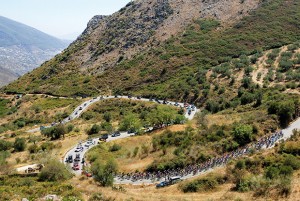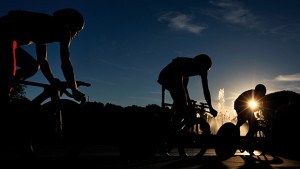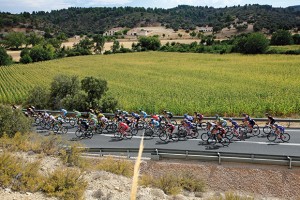 Excitement is building in Andalucía in anticipation of the 70th Vuelta a España, which sets off from Puerto Banús on August 22nd. One of Europe’s foremost cycling races, the Vuelta a España is as important in European cycling circles as the world famous Tour de France and renowned Giro d’Italia.
Excitement is building in Andalucía in anticipation of the 70th Vuelta a España, which sets off from Puerto Banús on August 22nd. One of Europe’s foremost cycling races, the Vuelta a España is as important in European cycling circles as the world famous Tour de France and renowned Giro d’Italia.
This year’s Vuelta will be comprised of 21 stages, eight of which will take place in Andalucía. In total the riders will cover almost 3,400km, pedalling through 44 mountain passes and racing in over 46 kilometres of time trials, six flat and 13 hilly or mountainous stages.
Stage one will consist of a 7.4 kilometre team time trial between Puerto Banús and Marbella town centre, but on 23rd August the serious racing begins with the 165 kilometre Stage Two climb from Alhaurin de la Torre to Caminito del Rey in El Chorro, sure to demonstrate which cyclists will dominate this season’s race circuit. For Stage Three, the riders will power their way from Mijas to Malaga City, via the Axarquia covering an impressive 164.4 kilometres.
 But it’s Stage Four that is creating a buzz around Sotogrande. On 25th August the riders will head west, starting their massive 203 kilometre route in Estepona, passing through Sotogrande on the way to the pretty hilltop frontier town of Vejer de la Frontera (Cádiz). The crowds are expected to come out in their droves to support the cyclists as they pass through what is surely one of the most picturesque sections of the Vuelta.
But it’s Stage Four that is creating a buzz around Sotogrande. On 25th August the riders will head west, starting their massive 203 kilometre route in Estepona, passing through Sotogrande on the way to the pretty hilltop frontier town of Vejer de la Frontera (Cádiz). The crowds are expected to come out in their droves to support the cyclists as they pass through what is surely one of the most picturesque sections of the Vuelta.
From then it’s onwards through Seville, Córdoba, Jaen, Granada and Murcia before the competitors head north to battle it out on the most mountainous sections and then drop down to the centre of the peninsula towards Madrid, for the culmination of the race on 13th September.
All details of the race were announced in a comprehensive presentation, which took place in January at the Torremolinos Auditorium. Some of the professional riders in attendance included Vuelta podium regular Alejandro Valverde, Purito Rodríguez (2014’s fourth place rider) and Marbella’s own Luis Angel Mate.
 The popularity of cycling in Spain continues to grow and there are thousands of races each and every year for those wishing to seriously compete. It remains an accessible and achievable sport for both Spanish and foreign residents, families and individuals with many towns, including Sotogrande, investing heavily in improving their cycle lanes to ensure the safety of participants, whether competitive or recreational.
The popularity of cycling in Spain continues to grow and there are thousands of races each and every year for those wishing to seriously compete. It remains an accessible and achievable sport for both Spanish and foreign residents, families and individuals with many towns, including Sotogrande, investing heavily in improving their cycle lanes to ensure the safety of participants, whether competitive or recreational.

